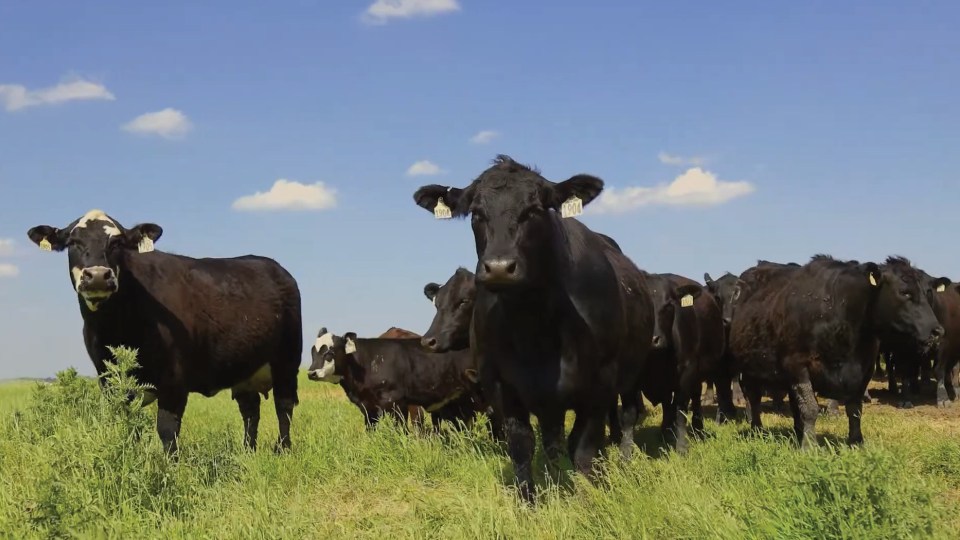Summer deworming benefits without a chute trip
By Dr. Jacques Fuselier
Using the right dewormers at the right time is critical to a successful grazing program. This is because internal parasites affect the nutritional status of the animal in essentially three ways: they decrease feed intake; they decrease nutrient absorption; and they increase nutrient requirements.
Cattle pick up parasites almost immediately after they are on contaminated green grass, and those parasites can start doing damage in a very short time. If cattle are dewormed at turnout and not again until they come off the pasture in the fall, they have several months to pick up gut-damaging worms.

Research shows that summer deworming improves cattle health and production. The good news is this doesn’t have to mean a trip through the chute. Using feed forms of dewormers – such as those found in range cubes, dewormer blocks or mineral – requires relatively little time and labor while still being highly effective.
In a research trial of stocker cattle on pasture,1 steers were given SAFE-GUARD® (fenbendazole) mixed in with the daily feed supplement on days 28 and 56 (in addition to SAFE-GUARD suspension on day 1).
Every 14 days, a fecal egg count (FEC) was collected from each group to test manure for the presence of internal parasite eggs. The purpose was to determine when there would be a spike in parasites, which was seen around day 56 of the trial in the control group.
Steers that were dewormed on days 28 and 56 gained 22 more pounds and had a 0.30-pound greater average daily gain than the control steers. At the conclusion of the trial, steers dewormed with SAFE-GUARD had an average fecal egg count of 0 eggs/3 grams, while control steers had an average fecal egg count of 128.6 eggs/3 grams.
How can you be sure cattle receive the proper dose?
Accurate dosing is critical – not only to give the dewormer the best chance of working effectively, but also to help reduce the development of resistance.
The active ingredient in SAFE-GUARD, fenbendazole, builds up in the fat tissue of parasites and they are unable to excrete it.2 This means that even cattle that ingest small amounts of SAFE-GUARD over the course of a few feedings will quickly build up a dose that is lethal to internal parasites. This is known as the cumulative dose effect, and it’s how you can be sure cattle are receiving an effective amount of dewormer. It is important to follow the label directions carefully and feed the proper amount required for the total number and weight of the cattle being treated.
Free-choice products like SAFE-GUARD blocks (three-day feeding) and mineral (three- to six-day feeding) contain salt as a limiter. After consuming their dose first, the more dominant animals will back off due to the limiter. Then, the rest of the animals will be able to come forward and get their dose.
When administering cubes or pellets (one-day feeding):
- Spread the product out evenly so each animal has a chance to consume the proper dose.
- If administering pellets bunkside, make sure there’s an adequate amount of space at the bunk for each animal.
It also is important to deworm calves at cowside. When calves start ruminating, they are at a high risk of picking up internal worms. Deworming appropriately from the time of early exposure (from the age of two months) can result in improved weaning weights. For spring-calving herds, it typically is good to deworm calves six to eight weeks after turnout onto pasture.3
Get a free FECRT kit
We cannot rely on visual signs of parasitism to drive parasite management decisions. After deworming, we often don’t know how effective the deworming was and the amount of time before reinfestation occurs.
This is best evaluated by performing a Fecal Egg Count Reduction Test (FECRT). If the number of parasite eggs per gram or 3 grams of feces is reduced by 90% or greater 14 days after deworming, then it is considered a successful deworming. If the reduction in egg count is less than 90%, you should discuss with your veterinarian ways to improve your deworming program.
You can evaluate the success of your deworming program with a free FECRT kit from Merck Animal Health. Work with your veterinarian to assess your deworming program and find the timing and formulations that work best for you. Learn more at SafeGuardWorks.com.
Important Safety Information
Do not use in beef calves less than 2 months old, dairy calves and veal calves. A withdrawal period has not been established for this product in pre-ruminating calves. Additionally, the following meat withdrawal and milk discard times apply:
SAFE-GUARD Paste: Cattle must not be slaughtered for 8 days. For dairy cattle, the milk discard time is 96 hours.
SAFE-GUARD Suspension: Cattle must not be slaughtered for 8 days. For dairy cattle, the milk discard time is 48 hours.
SAFE-GUARD En-PRO-AL Type C Medicated Block: Cattle must not be slaughtered for 11 days. For use in beef cattle only.
SAFE-GUARD 20% Protein Type C Medicated Block: Cattle must not be slaughtered for 16 days. For use in beef cattle only.
SAFE-GUARD Type A and other medicated feed products (pellets, cubes, free-choice mineral or free-choice liquid): Cattle must not be slaughtered for 13 days. For dairy cattle, the milk discard time is 60 hours.
Resources
- Data on file.
- Vercruysse J, Claerebout E. Mechanisms of actions of anthelmintics. Merck Veterinary Manual Online. https://www.merckvetmanual.com/pharmacology/anthelmintics/mechanisms-of-action-of-anthelmintics. Accessed Feb. 2, 2021.
- Kevin Gould, M. S. U. E. (2022, Jan. 21). Beef cattle deworming strategies. MSU Extension. https://www.canr.msu.edu/news/beef_cattle_deworming_strategies. Retrieved April 10, 2023.
Find more content for your beef operation.
About the author

Jacques Fuselier, D.V.M., D.A.C.T., D.A.B.V.P.
Technical Services Manager,
Merck Animal Health
